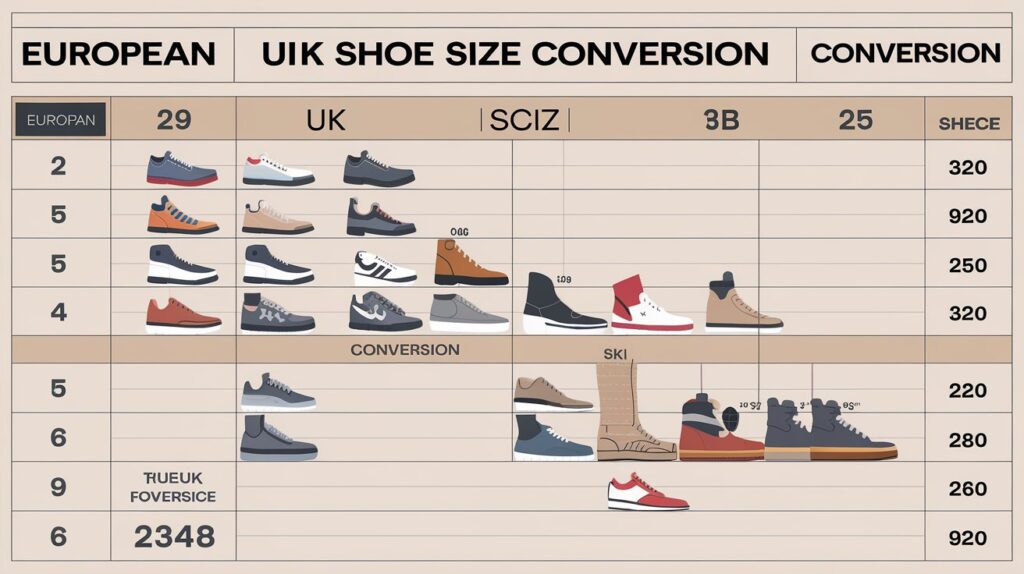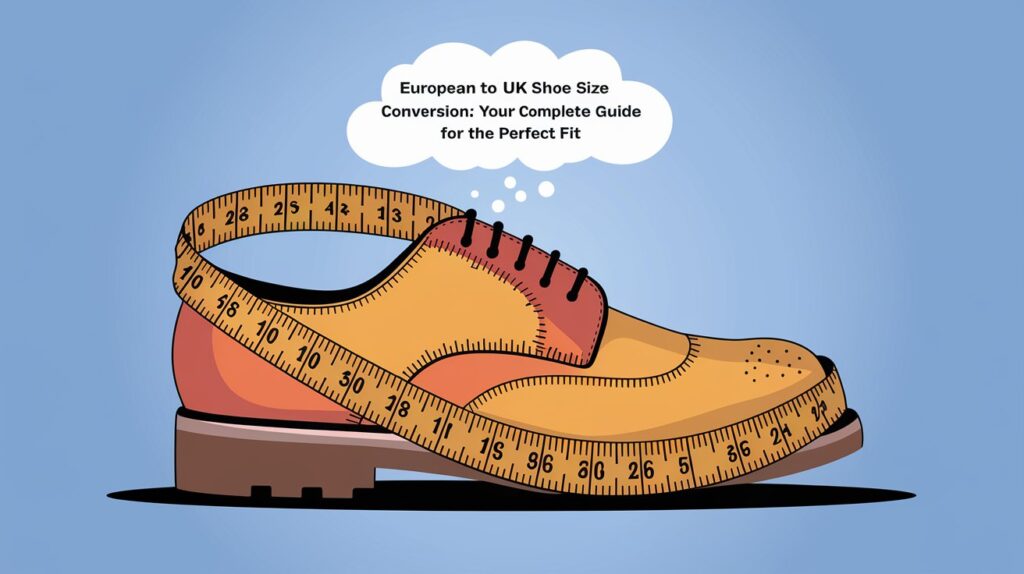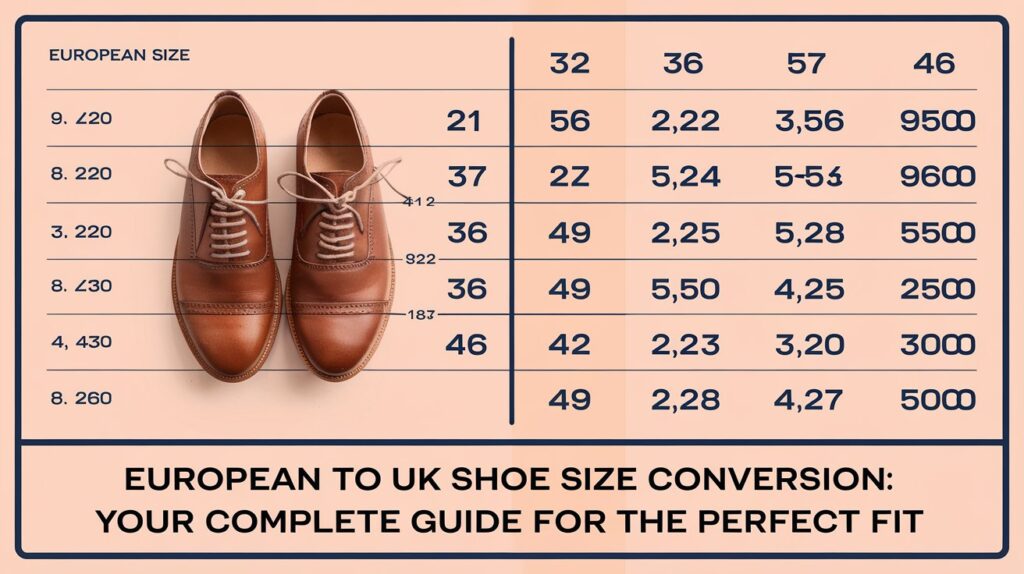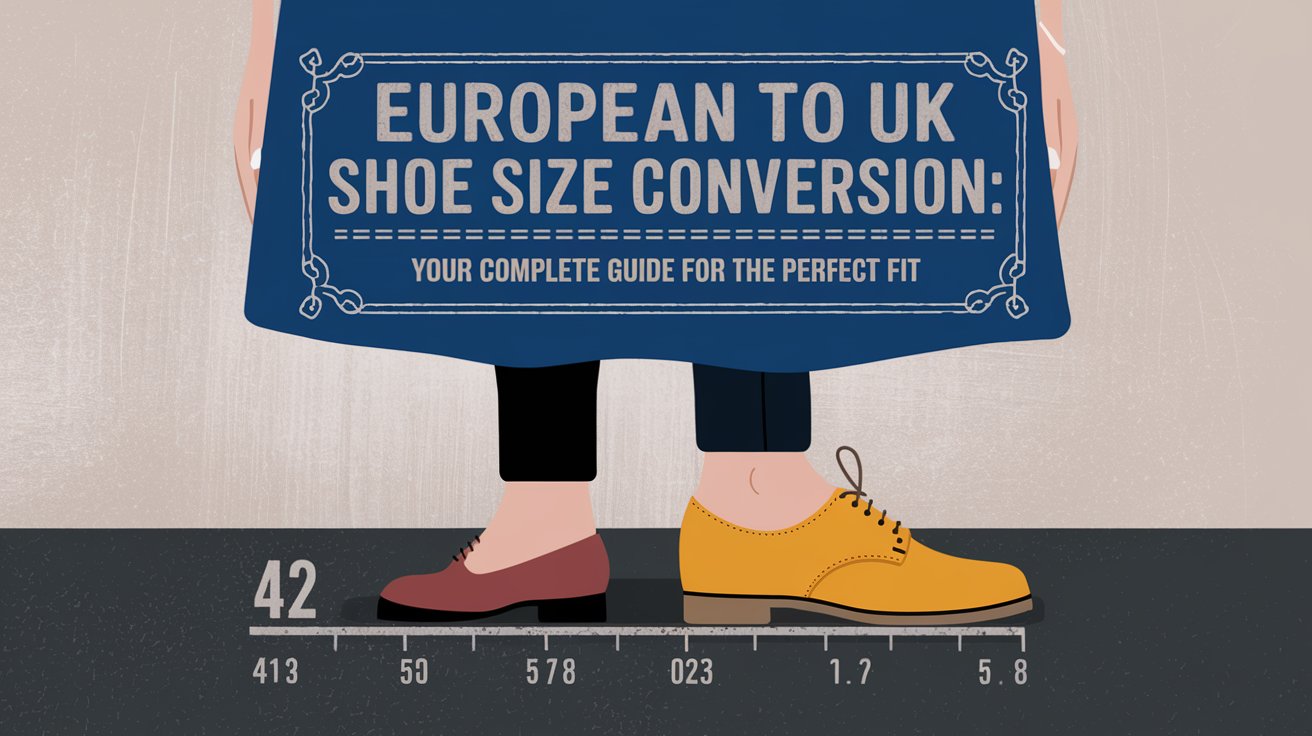Shoe shopping across regions can feel overwhelming due to different sizing systems. One of the most common confusion points is European (EU) to UK shoe size conversion. As a footwear specialist with extensive hands-on experience, I’ve helped many people find the perfect pair—no matter where their shoes are sourced. In this comprehensive guide, you’ll learn why these two sizing systems differ, how to measure your foot accurately, and the best ways to avoid common pitfalls. Let’s dive in!
Understanding EU vs. UK Sizing
European and UK sizing systems use different numerical scales:

- EU Sizes: Typically run in whole numbers (e.g., 38, 39, 40). Some brands may skip half sizes altogether.
- UK Sizes: Often include half sizes (e.g., 6, 6.5, 7). These numbers are generally smaller than corresponding EU sizes.
Key Insight: A UK size 8 is not the same as an EU size 42. Relying on a straightforward conversion chart and accurate foot measurements is vital to finding a match.
Why Accurate Measurement Matters
- Comfort: Ill-fitting shoes can cause blisters, corns, or even foot and back pain.
- Longevity: Shoes that fit properly experience less friction, potentially extending their lifespan.
- Performance: Whether you’re walking, running, or standing, a snug (but not tight) fit offers better stability.
Expert Tip: Always check brand-specific guidelines, as sizing can vary due to different manufacturing processes.
How to Measure Your Foot Step-by-Step

- Gather Essentials
- A sheet of paper
- A pencil
- A ruler or measuring tape
- Trace Your Foot
- Place the paper on a hard floor.
- Stand with your weight evenly distributed on the foot you’re measuring.
- Trace around your foot, keeping the pencil upright to ensure an accurate outline.
- Measure Heel to Toe
- Identify the longest part of your foot: often the tip of your big toe or second toe.
- Use the ruler or measuring tape to measure from your heel’s back to your longest toe’s tip.
- Record this measurement in centimeters (cm).
- Repeat for Both Feet
- One foot can be slightly larger. Always use the larger foot’s measurement as your baseline.
- Convert to UK Size
- Match your foot length to the appropriate EU size.
- Cross-reference the chart below for the equivalent UK size.
Men’s EU to UK Size Conversion Chart
| EU Size | Approx. Foot Length (cm) | UK Size |
|---|---|---|
| 39 | 24.7 – 25.0 | 5.5 – 6 |
| 40 | 25.1 – 25.4 | 6.5 – 7 |
| 41 | 25.5 – 25.8 | 7.5 – 8 |
| 42 | 25.9 – 26.2 | 8.5 – 9 |
| 43 | 26.3 – 26.6 | 9.5 – 10 |
| 44 | 26.7 – 27.0 | 10.5 – 11 |
| 45 | 27.1 – 27.4 | 11.5 – 12 |
| 46 | 27.5 – 27.8 | 12.5 – 13 |
Note: Actual fits can vary by brand. If possible, consult the brand’s specific size guide.
Women’s EU to UK Size Conversion Chart
| EU Size | Approx. Foot Length (cm) | UK Size |
|---|---|---|
| 35 | 21.9 – 22.2 | 2.5 – 3 |
| 36 | 22.3 – 22.7 | 3.5 – 4 |
| 37 | 22.8 – 23.2 | 4 – 4.5 |
| 38 | 23.3 – 23.7 | 5 – 5.5 |
| 39 | 23.8 – 24.2 | 6 – 6.5 |
| 40 | 24.3 – 24.7 | 7 – 7.5 |
| 41 | 24.8 – 25.2 | 8 – 8.5 |
| 42 | 25.3 – 25.7 | 9 – 9.5 |
Note: Some European footwear brands also produce half sizes (like 38.5), but not all do. Check the brand’s product description to confirm.
Pro Tips for a Better Fit

- Try Shoes Later in the Day
- Feet can swell as you walk or stand. Checking the fit in the afternoon ensures a roomier, truer size.
- Wear the Right Socks
- If you typically wear thicker socks, measure and try shoes with them to account for extra space.
- Check Width
- Some brands offer multiple width options (e.g., Narrow, Regular, Wide). Choose based on your foot shape.
- Walk & Test
- Walk around on a hard surface for a few minutes. Ensure there’s no heel slippage or toe crowding.
Common Mistakes to Avoid
- Assuming One-Size-Fits-All
- Your UK size in boots may differ from trainers or sandals.
- Ignoring Brand-Specific Charts
- Every manufacturer has unique lasting and measurement techniques.
- Buying Too Big
- While a little extra room can be comfortable, overly large shoes can lead to tripping or foot strain.
- Forgetting Return Policies
- Especially when buying online, make sure returns or exchanges are easy if the fit isn’t right.
Final Thoughts
Successfully converting European to UK shoe sizes requires knowing your exact foot length, understanding the nuances of each sizing system, and staying mindful of brand variations. By measuring your feet correctly and using the comparison charts above, you’ll minimize the guesswork and maximize your chances of finding a comfortable, supportive fit.
Remember: A well-fitted shoe isn’t just about comfort—it can also improve posture and foot health in the long run. Take a few extra steps in the selection process, and your feet will thank you.



Leave a Reply